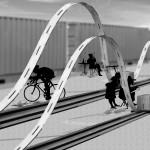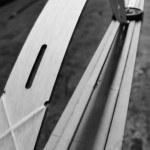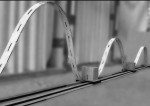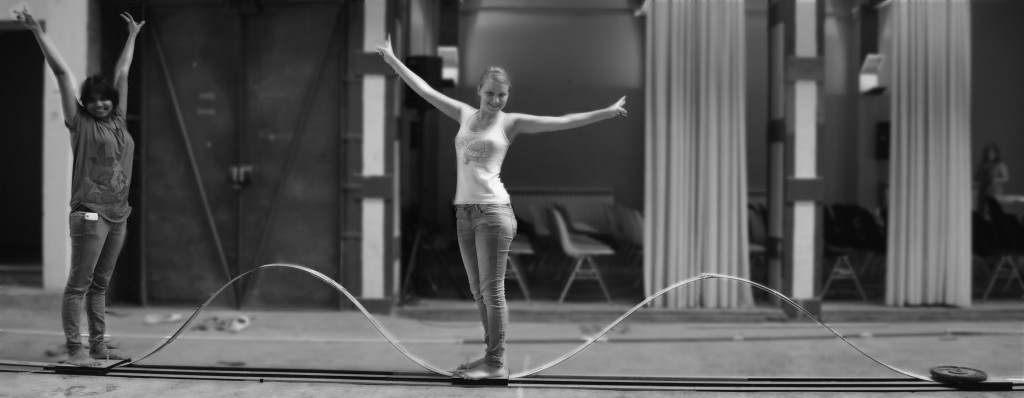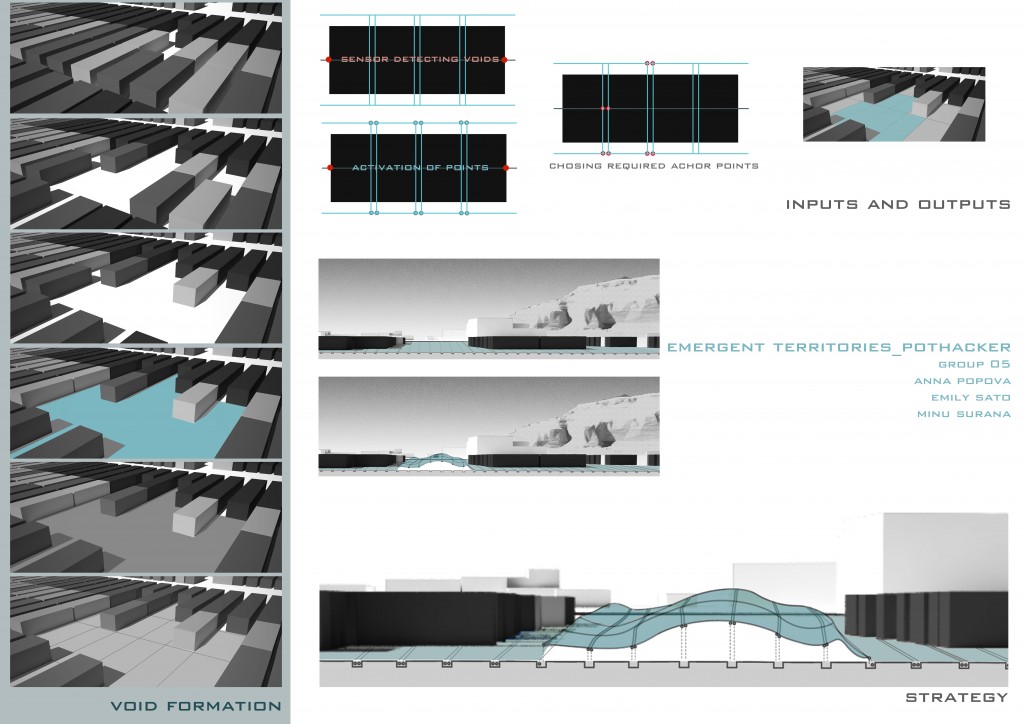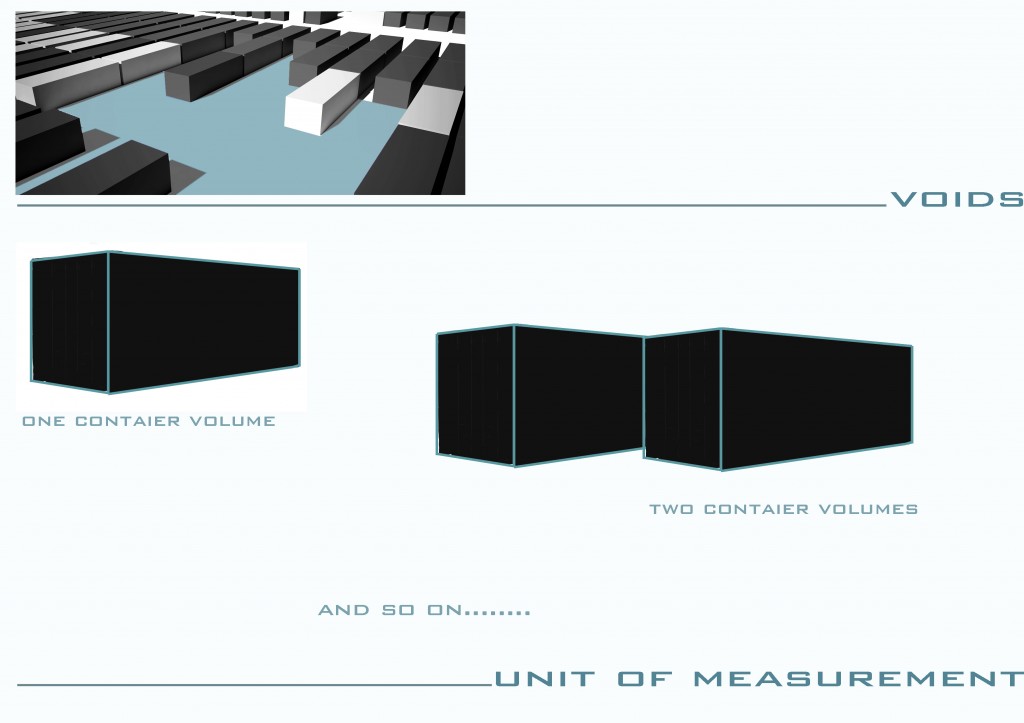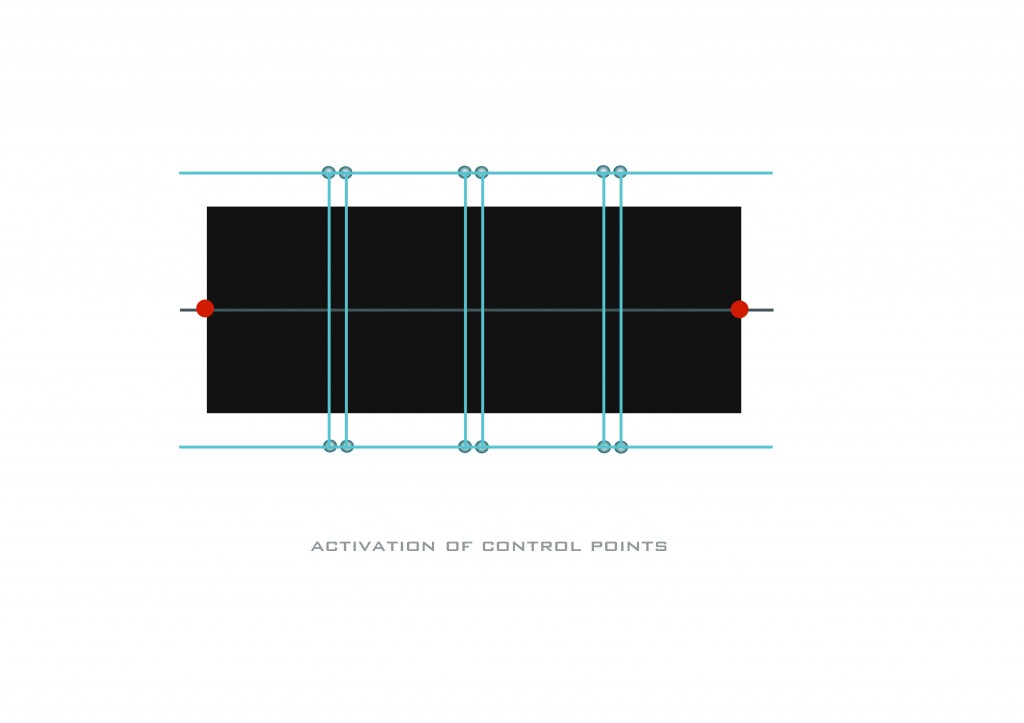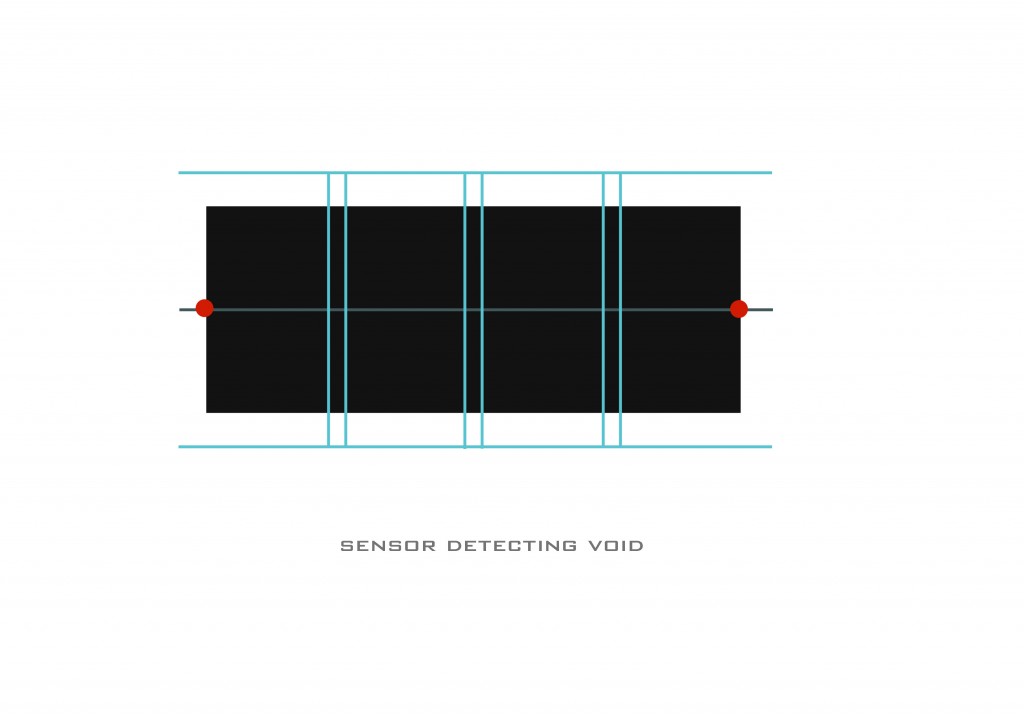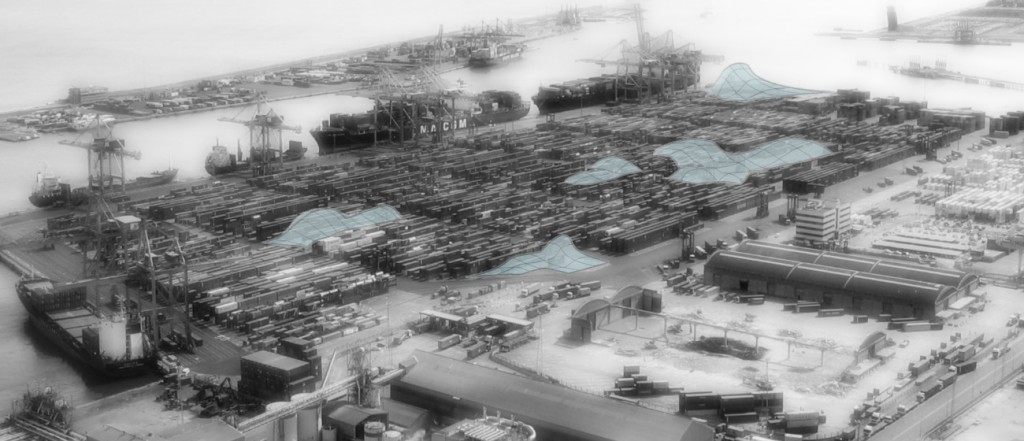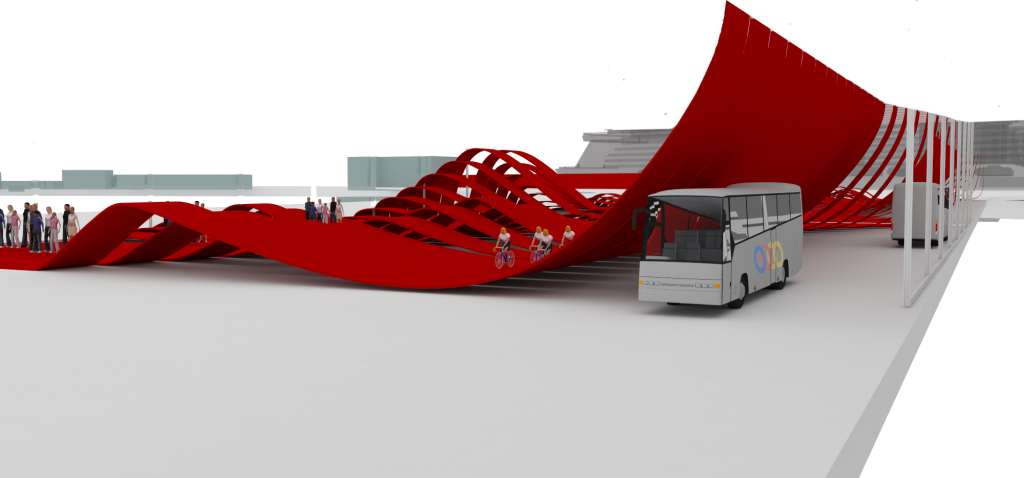Exploration of wood as a bending material, during the workshop, helped us conceive multiple curves with a strip of wood spanning 10m by 0.1m. This wooden strip was made of 3 layers. 2 of which were used to achieve the length, give thickness and more tension to the strip. The 3rd layer consisted of smaller strips countering the bending effect of the joint between 2 wooden strips.
Category Archives: Students
Development of prototype with Edouard Cabay
Workshop with Edouard Cabay
The aim of the workshop was to create a responsive modul of our system using in the Emergent Territories studio project, where the excercise is to redevelop the Port of Barcelona. Using fabric material, different joints were made against stretching forces to achieve the strongest connection between the fabric and the supporting structure. Also, we tried to ‘print’ the fabric with laser cutter, to make faster the folding process and being more detailed / specific. Because of its repsonsive properties, one facade of the modul was managed to making movement in different angles – according to the amount of our interested inputs.
Group 5 presentation for the review with Nader Tehrani
A space may be defined by its usage, environment, volume and time. Port de Barcelona is one such space being characterized and having unfathomed attributes of the same, yet to be explored. An orchestrated play of such spaces may be constructive, liberating and help redefine the fundamental concept of port spaces.
Cruise Terminal Barcelona
Based on a investigation on social networking related to tourism, specifically from cruise passengers, we got some conclusions, there is an existing lack of connectivity to the city (only one way and crowded the times in use), waste of time from cruise passengers trying to reach the city even when they have only a few hours to enjoy, a significant percentage of passengers that stays on the cruise-port, long non apt walkable distances. The result of this is to design a new terminal based on mobility systems existing in a new grid responsive to interests of people, the design respond basically to flows, movement and spaces, there is a first approach to a basic module that try to achieve all parameters of design. Graphics showing the position of the cruise terminal related with the network of the city and the incoming passengers, in summary we gathered types of user related to their mobility preferences, our first approach, open new ways to get into the city network, Montjuic and the Beach.
Hyperborder Port: Nader Tehrani Review
Barcelona Port is in the edge of the city where different flows and fixities coexist together. The suggestion that different footage took from the port gave to us was the notion of the border. Boundaries or limits are part of the natural and urban composition that could be considered as negotiators between elements and actions; flows and fixities. The perception of the border is predominant in a port. Besides the idea that a port is the limit between the water and the land, it also means political, urban, social and economic boundaries.
The concept of the first approach we developed from the site was a visual record of all the type of limits we found in the port. The waterfront is a limit between the land and the water that has been shaped through the time. Also we found important to refer Kevin Lynch description of borders: “Borders are linear elements not used or considered as paths by the observer.They are the boundaries between two phases, linear breaks in the continuity. These border elements are for many people importan organizing featureas, particularly in the role of holding together generalized areas”. For us, this concept is very important in order to understand the image of borders that cities have, and maybe even rethink it.

